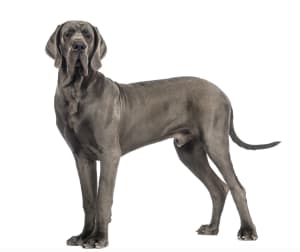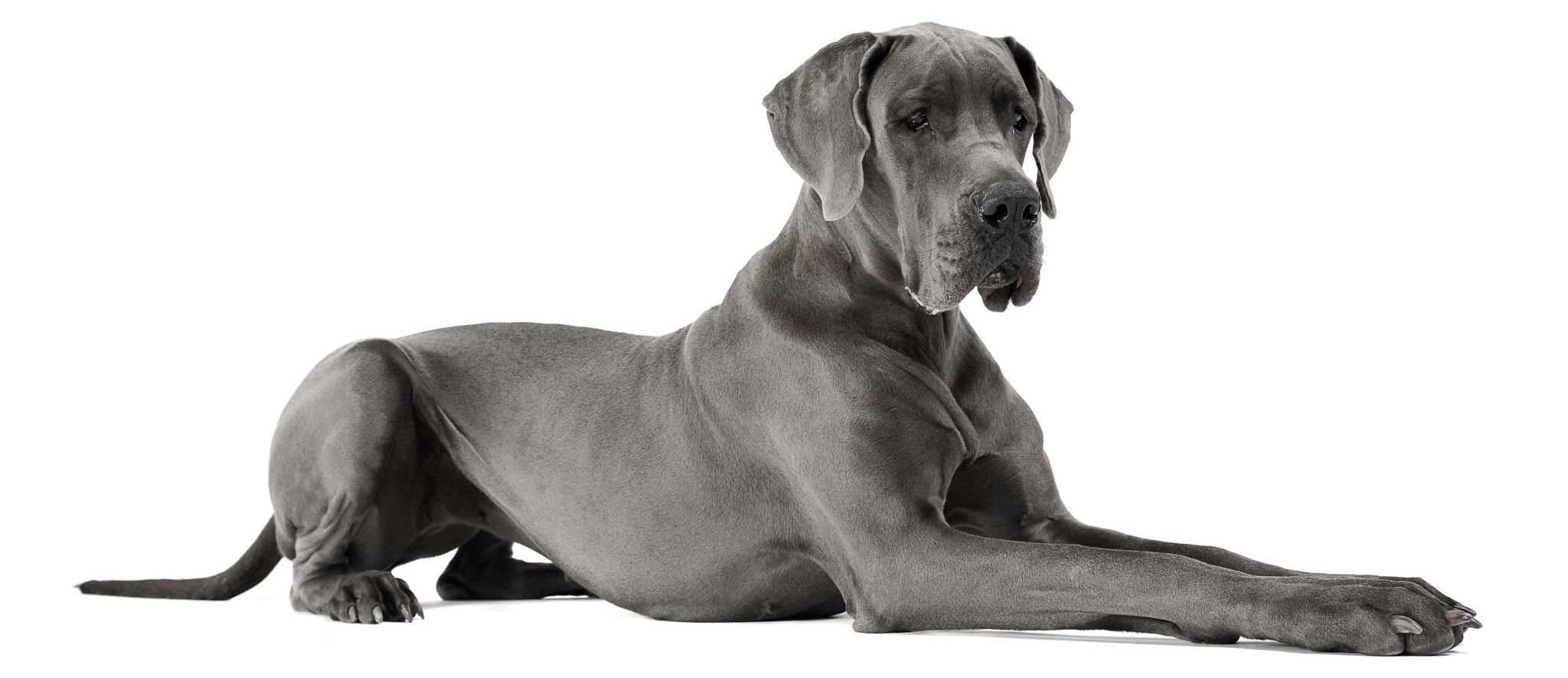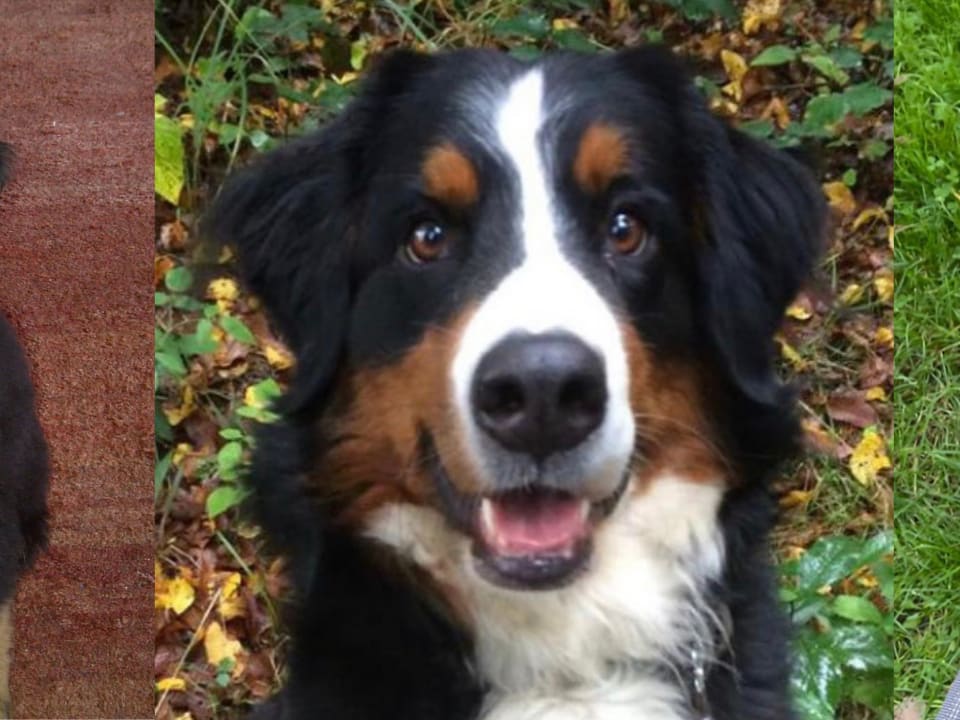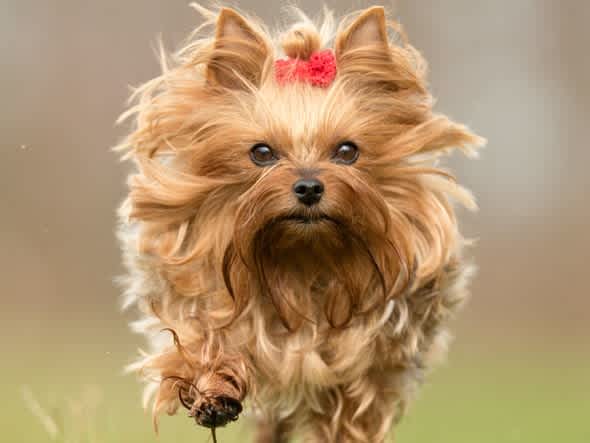Are you thinking of bringing a Great Dane home? There’s so much to learn about this gentle giant, and we’re here to help. We’ll explore this breed’s physical characteristics, nutritional needs, playtime tips, and much more. At the bottom of this guide, look for our comprehensive list of all the health conditions we test for here at Embark.
Your Guide to Great Danes

The sweet faces of these puppers and their patient and dependable temperament are why Great Danes make for such a popular addition to families. According to American Kennel Club (AKC), these German doggos were once trained to be hunters of wild boars. Nowadays, Great Danes are known for their protective nature and their unwavering love for their humans. Their massive and intimidating size leads many to be deceived, as these puppers are friendly and sensitive people-pleasers that might sprawl across the entire couch, desperate for your cuddles. Safe to say that bringing one of these courageous and loyal pups into your home will allow for restful nights knowing that your Great Dane is on the lookout.
Fun Facts
Curious to know more about these doggies? Here are some interesting facts about the Great Dane:
- The Great Dane is nicknamed the “Apollo of Dogs,” as they are majestic and regal.
- According to the AKC, the first known written description of a dog closely resembles the Great Dane. This can be found in Chinese Literature that dates back to as early as 1121 BC.
- The Great Dane is among the largest breeds because of their height and weight. Only the Irish Wolfhound is taller.
- Great Danes are very affectionate with children according to Dogtime, probably because of their gentle and sensitive personality.
Physical Characteristics
Great Danes are one of the largest working breeds and often tower over their people parents when standing on their hind legs. The average Great Dane ranges from 110 to 175 pounds. Though they can be as tall as 32 inches at the shoulder, they remain sturdy and well-balanced, according to the AKC. Being muscular and bearing a smooth coat, their appearance is often majestic and grand. PetMD states that the coat of a Great Dane is short, shiny, and can come in various colors and patterns, including brindle, black, harlequin, mantle, and more.

Bringing your new Great Dane home
Your house might look a little smaller with this giant doggo all settled in! Bringing home a new family member can be overwhelming, as a lot is changing for both you and your furry friend. It’s important for your Great Dane to be socialized early and be exposed to as many friends as possible, doggie and human. Great Danes are eager to please their people and through positive reinforcement methods (bring on the treats and snuggles!), these goofballs will be perfectly well-mannered in no time. Before adopting a Great Dane, make sure to understand the commitment of owning such a large pup!
If you are looking to adopt a Great Dane from an animal shelter or find a breeder, it’s important to look for breeders that can provide detailed health records for their puppies (and parents!) as well as genetic testing for health conditions. The Orthopedic Foundation for Animals (OFA) and their Canine Health Information Center (CHIC) maintains a voluntary database of Great Danes and their health screening results.
Nutrition
Want to make your Great Dane’s tummy happy and healthy? Feed them dog food that is age-appropriate and high-quality. While we know that your doggo is a part of the family, avoid giving them human food from the family dinner table. The biggest killer of this breed is bloat, otherwise known as gastric dilatation-volvulus, The American College of Veterinary Surgeons reported. This is the twisting and distention of the stomach and while the causes are not fully understood, feeding your Great Dane several small meals each day could help to decrease the chances of bloat.
The best way to come up with the proper meal plan for your pup is to talk to your veterinarian.
Playtime
Despite their regal and poised appearance, Great Danes require exercise every day and are avid lovers of physical activities. Your Great Dane will likely make for an amazing jogging or hiking companion and serve as a great breed for those humans who enjoy the outdoors. The AKC recommends waiting until your Great Dane is at least 2 years old before taking them on vigorous adventures, as a way to avoid injury to growing joints. Avoiding physical activity around mealtime is reportedly another way to lower the chances of bloat.

Grooming
With the love of a furry companion comes drool, some shedding, and more drool. According to The Daily Puppy, brushing your Great Dane every day with a bristle-body brush will keep their coat shiny as ever! Great Danes don’t shed a lot, but there might be some drool involved (how can they help it at the sight of yummy treats?).
Health and aging
As any family member gets older, it’s important to schedule regular visits with healthcare providers, in this case, veterinarians. While their massive size makes for the best hugs, it also causes Great Danes to be prone to bone and joint issues as they age. The AKC estimates the average life expectancy of a Great Dane to be 8 to 10 years. Testing with Embark could potentially increase your pup’s healthspan.

An Embark Dog DNA Test looks at the following health conditions in Great Danes:
We hope that this breed guide helps you with the Great Dane in your life! If you are considering adopting one of these gentle giants, get ready for some serious slobbers and snuggles. Click here for some tips to help you get ready for all of the love your furry friend is about to give.
If you haven’t tested your Great Dane yet, order your Embark Dog DNA Test today!













